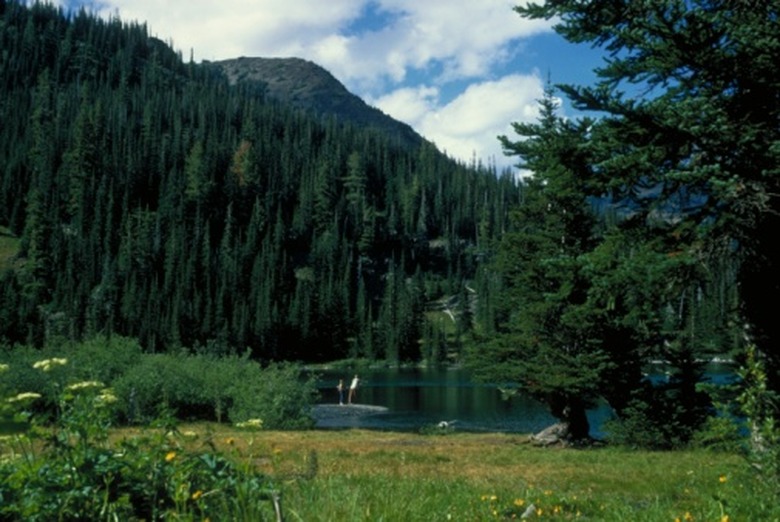Differences Between Elderberries & Chokecherries
There are numerous similarities between elderberries and chokecherries, but a few key differences will help you differentiate between the plants. Chokecherries are members of the rose family, while elderberries are members of the honeysuckle family. Both may be found in the wild or used in yards or gardens for their fruit, for ornamental purposes or for screening.
Location
While both plants may be found growing near or along streams and roadways, elderberry plants need a moist growing site; chokecherry has the ability to grow on dry, rocky hillsides and in mountain and prairie environments.
Size
Both plants may appear in tree or shrub form, but elderberry only attains 10 to 15 feet in height. Chokecherry may reach up to 30 feet in height and 10 to 20 feet wide. Chokecherry fruits are slightly larger and more loosely arranged than elderberries and grow to 1/4 to 1/2 inches in size, while elderberry fruits are usually 1/4-inch or less.
Appearance: Bark and Leaves
Elderberry plants have soft stems and a smooth, thin, light gray-brown bark. The mature form has fissured bark. Young chokecherry plants have smooth, reddish brown bark. The bark of older plants becomes gray-black and remains smooth.
The glossy, oval-to-oblong-shaped leaves of chokecherry are alternate and finely serrated. Elderberry leaves are serrated and have an opposite, compound arrangement. The appearance of the arrangement is likened to that of a feather. Chokecherry leaves are shorter, 1 to 3 1/2 inches long, while elderberry leaves reach 6 1/2 inches in length.
Appearance: Flowers and Fruits
Both plants tend to flower and fruit around the same time. Elderberry flowers are white, and chokecherry flowers are white or pink and slightly more fragrant. Chokecherry flowers are arranged in elongated cylindrical racemes. Elderberry plants produce a broad flower cluster with a flat top. The clusters can be up to a foot wide.
Chokecherry fruits look like small cherries and are a stone fruit. Chokecherry seeds are toxic. Elderberries have small, edible seeds inside, and elderberry blooms are edible.
Most chokecherries experience the same color transition as elderberries, maturing from red to purple or black; however, some chokecherry varieties may produce dark red or white fruit. The elderberry Sambucus racemosa produces a red-colored fruit considered poisonous by many sources.
Uses
Both plants serve as a food source for wildlife, including backyard birds, game birds, deer and small mammals. Chokecherry also provides cover. Elderberry is considered useful as a livestock feed, while chokecherry is poisonous to cattle and sheep.
The fruits of both plants have similar food uses. Chokecherries are named for the bitterness of the astringent fruit; however, the dried berries lose their bitterness, and boiling or drying of the fruits neutralizes the prussic acid content in the pits, according to the United States Department of Agriculture. Elderberries have a bland to bitter flavor unless processed.
References
- Ontario Ministry of Agriculture, Food and Rural Affairs; Elderberries for Home Gardens; Kevin Schooley; Feb. 1995
- United States Department of Agriculture; Plant Guide — Chokecherry; Wayne Crowder, et al.; Jan. 14, 2004
- United States Department of Agriculture; Plant Guide — Common Elderberry; Michelle Stevens, et al.; Apr. 3, 2001
- University of Florida School of Forest Resources and Conservation: Florida Forest Trees — Elderberry
